
by Guest Author | Jul 16, 2025 | Data, News, Policy
The Bowen Center for Health Workforce Research and Policy is pleased to announce the promotion of Dr. Brittany Daulton to Associate Director. Dr. Daulton has served as a Faculty Fellow at the Bowen Center since 2023, where she has contributed significantly to research and policy initiatives aimed at strengthening Indiana’s health workforce.
In her new role, Dr. Daulton will help lead the Bowen Center’s strategic direction, support stakeholder engagement, and advance data-driven policy development. Her background in evaluation science, research methodology, and translation position her well to help guide the Bowen Center’s mission of informing policy and aligning initiatives to improve health outcomes across Indiana.
This promotion reflects Dr. Daulton’s dedication to interdisciplinary collaboration, evidence-based research, and public service. The Bowen Center looks forward to her continued leadership in addressing the complex challenges facing Indiana’s health workforce.
Follow the links below to learn more about Dr. Daulton.
LinkedIn
IU Faculty Page
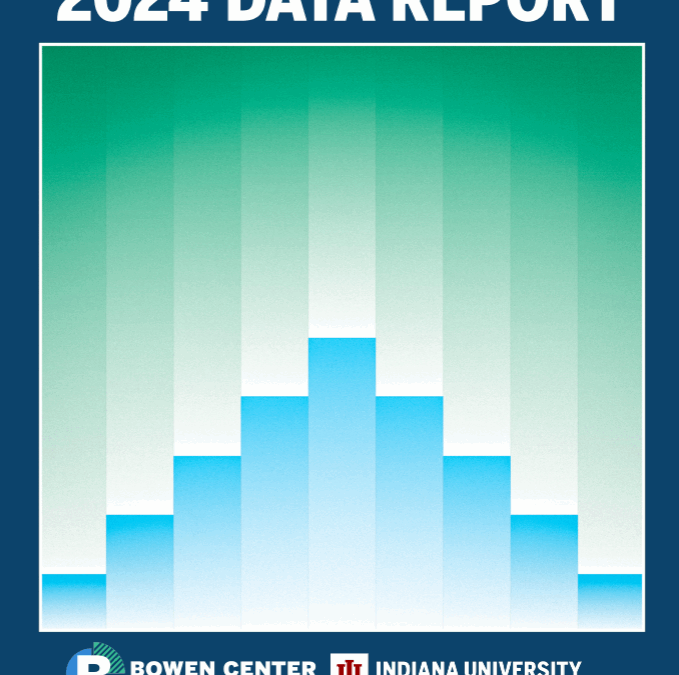
by Guest Author | Jun 18, 2025 | Data
The Bowen Center for Health Workforce Research and Policy’s latest Indiana oral health data report offers an overview of the state’s dentists and dental hygienists. It uses licensure data and survey responses to examine workforce demographics, education, practice settings, and geographic distribution. It also explores emerging trends in service delivery and access to care across Indiana.
The full findings are in the report below and may have implications for health care planning, policy development, and community health initiatives.
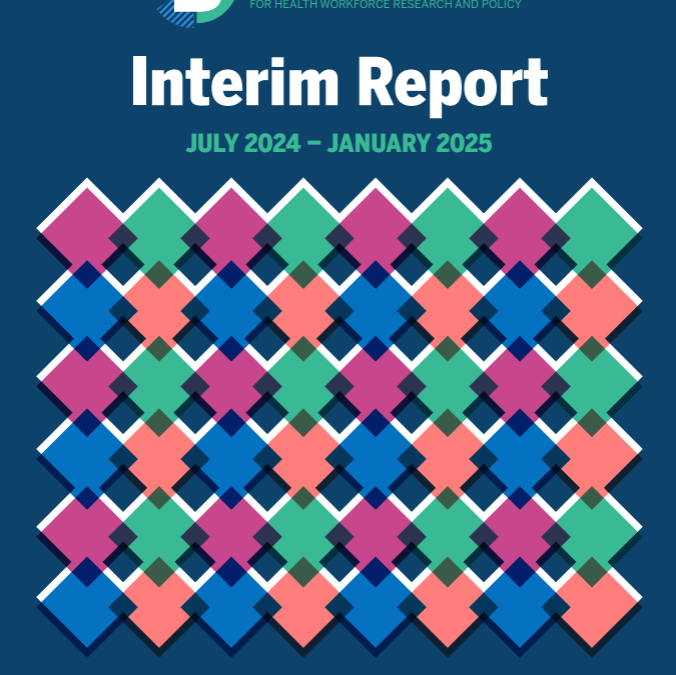
by Guest Author | May 8, 2025 | Data, News, Policy, Reports
The Bowen Center for Health Workforce Research and Policy at Indiana University is pleased to share its interim report to the Indiana Department of Health covering activities from July 2024 through January 2025.
This report provides an overview of the Center’s efforts to support data-driven health workforce planning and policy across Indiana and highlights ongoing initiatives which focus on health workforce data collection, analysis, and stakeholder collaboration. The report also reflects the Center’s continued commitment to producing actionable insights and engaging key partners to inform health workforce development and decision-making.
Through its work, the Bowen Center aims to ensure that Indiana’s health workforce is aligned with the needs of communities statewide. This interim report is intended to provide transparency on progress to date. We invite you to review the full report below to learn more.
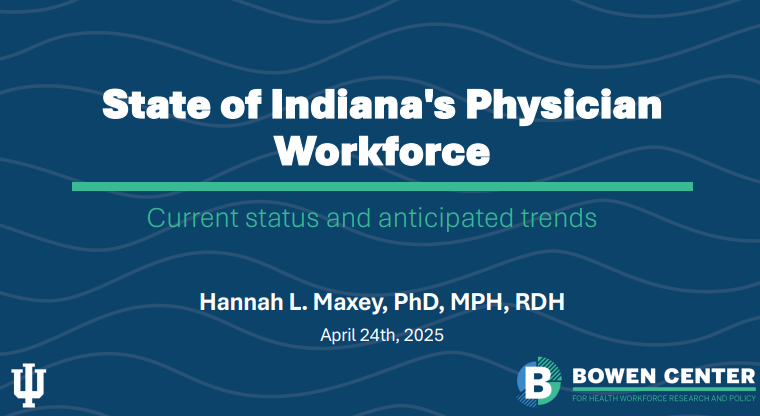
by Guest Author | Apr 23, 2025 | Data, Policy, Presentations
The physician workforce is critical in ensuring access to health care across Indiana. In a presentation to the Indiana Society of Physician Recruiters, Bowen Center Director Dr. Hannah Maxey will present an overview of the state’s physician workforce’s current status and future outlook.
The presentation will include an overview of the latest Indiana physician workforce data including a description of total supply, geographic distribution and primary practice setting. In addition to this supply data, Dr. Maxey will present demand data from Indiana Department of Workforce Development and educational data from the recent Indiana Physician Pipeline to Practice report. Additional topics will include physician wellness and burnout, artificial intelligence, and highlights from the 2025 Legislative Session.
Check out the full slide deck below!
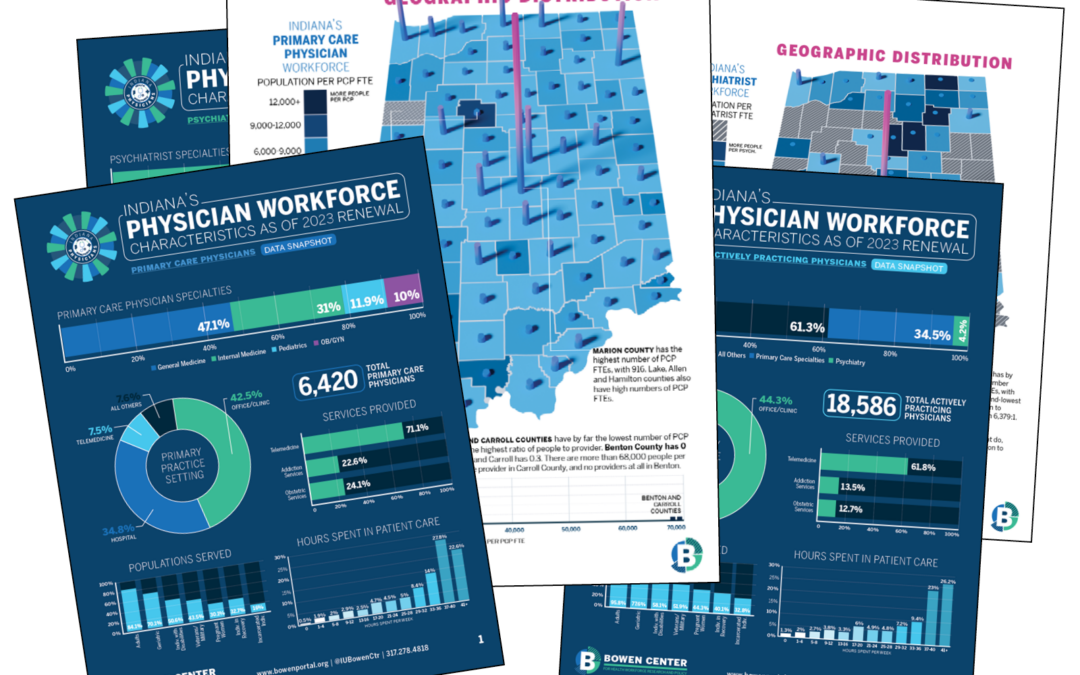
by Guest Author | Mar 27, 2025 | Data
The Bowen Center for Health Workforce Research and Policy has released its latest data snapshots detailing Indiana’s physician workforce characteristics as of the 2023 license renewal process.
The three new reports cover:
- All Actively Practicing Physicians – With 18,586 physicians statewide, the data reveals that 61.3% of physicians reported practicing in specialties outside primary care, while 34.5% reported a focus on primary care and 4.2% on psychiatry. 61.8% of physicians reported providing telemedicine services.
- Primary Care Physicians – Indiana has 6,420 primary care physicians, with Family/General Medicine (47.1%) and Internal Medicine (31%) representing the largest specialties, as self-reported by Indiana primary care physicians. Over 71% reported providing telemedicine services, and nearly 23% reported offering addiction services.
- Psychiatrists – The state has 782 actively practicing psychiatrists, with 90.5% reporting a specialty of general psychiatry and 9.5% in child psychiatry. Notably, 31 counties report no psychiatrist FTEs, highlighting significant disparities in mental healthcare access across Indiana.
Each snapshot includes a detailed map of geographic distribution, showing both the number of each type of physician in each county, the per capita figures, and a histogram showing country distribution. Marion, Lake, Allen, and Hamilton counties showing the highest concentration of physicians, while rural counties like Benton and Carroll face major shortages.
Does Indiana physician health workforce data pique your interest? Take a deep dive into Indiana’s 2023 Physician Workforce Data Report, complete with interactive data and charts galore at this link.
Check out each of the snapshots directly below or download the documents using the links in the text above.
All Indiana Physicians Workforce Snapshot
Primary Care Physician Workforce Snapshot
Psychiatrist Workforce Snapshot:
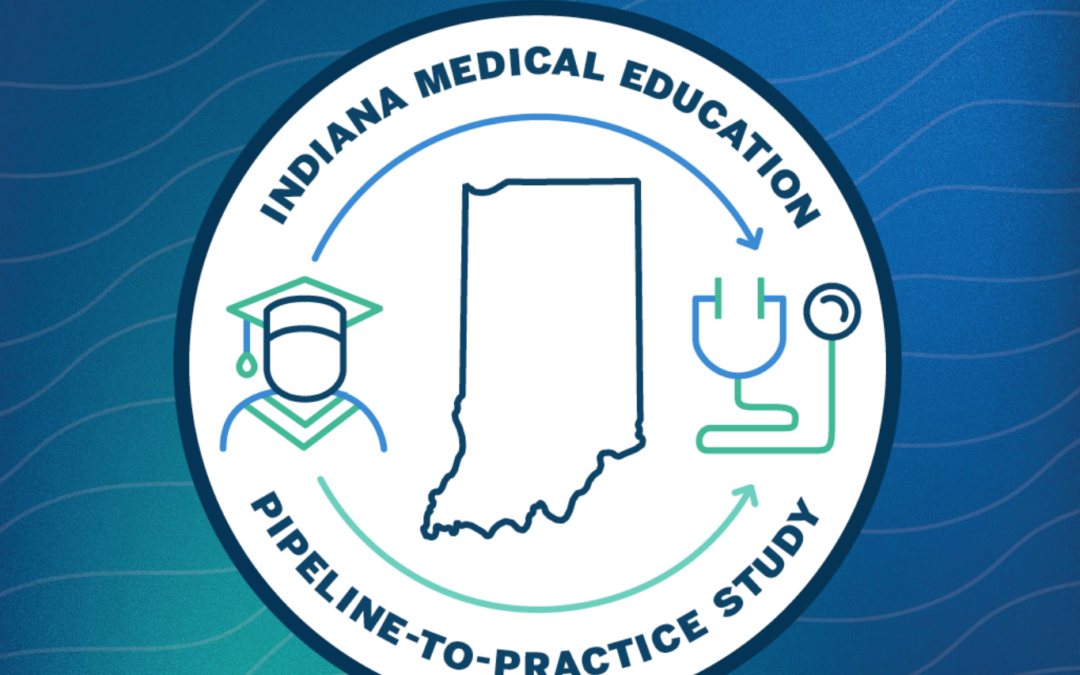
by Guest Author | Feb 18, 2025 | Data, Policy
Retention of medical students and residents is crucial to ensuring a strong physician workforce. This report examines retention within Indiana’s medical education pipeline between 2019 and 2024, challenges faced by residency program directors, trends in physician workforce capacity at Indiana hospitals, and existing initiatives supporting medical education and training in Indiana.
This work was completed in collaboration with the Indiana Department of Health. It is our hope that this report can inform discussions and policies targeting medical education in Indiana.
Read and download the project summary report below or find the full report here.






